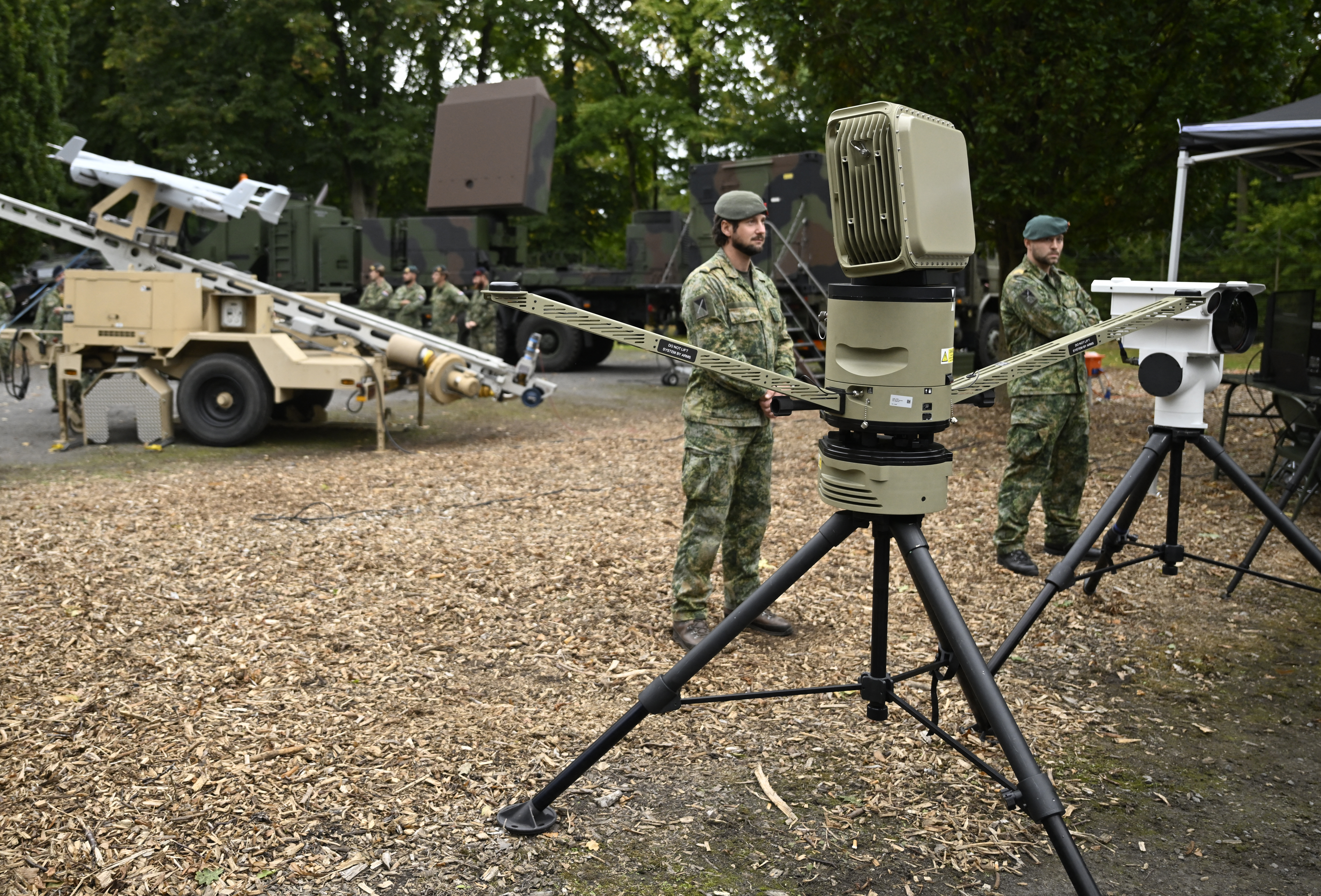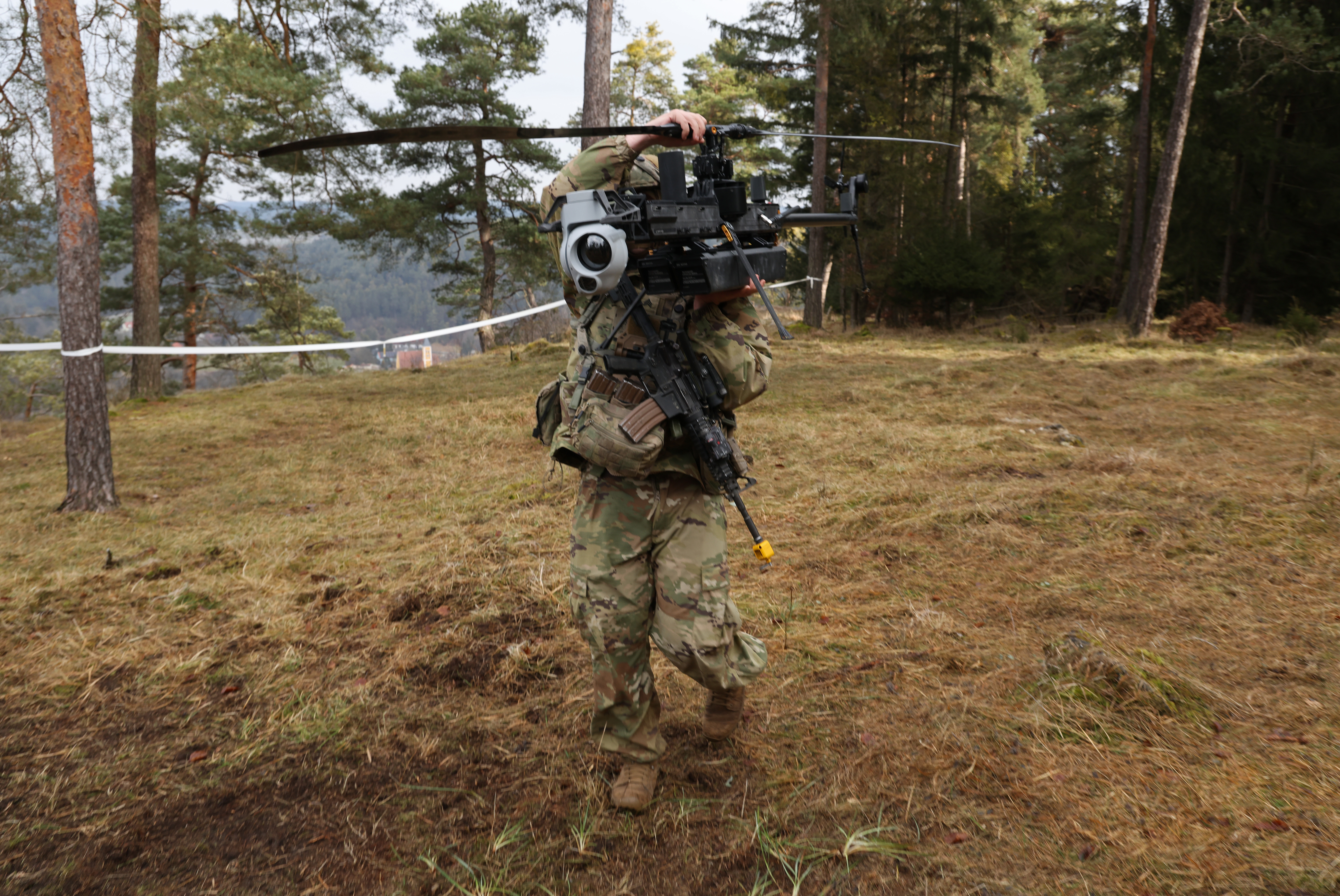
The B-52 bomber’s re-engining program has hit a delay as an inlet redesign pushes the critical design review into next year. Despite the setback, a federal watchdog agency says initial operational capability remains on track for 2033.
The 10-month delay stems from “ongoing engine inlet issues” discovered during testing, the Government Accountability Office said in its annual report on the progress of major weapons programs, released last week. Distortion was creating non-uniform airflow that can affect the engine’s performance, spurring the need for a redesign.
GAO also said the delay was caused by a lag in Boeing’s paperwork, and faulted the company for not taking a more comprehensive, digital approach to the program.
The watchdog office also said it will take nearly 50% longer to complete a related effort to modernize the bomber’s radar, totaling nearly nine years rather than about five. The Air Force recently indicated that delay would likely trigger a so-called Nunn-McCurdy breach, which prompts the Pentagon to review an acquisition program and reset its expected cost and schedule.
The two modernization programs comprise the bulk of Stratofortress upgrades designed to keep the 64-year-old bomber fleet flying for another 50 years. Boeing is the overall integrator for the engine, radar and other B-52 upgrades.
The redesign is isolated to the inlet, provided by Boeing, rather than the Rolls-Royce F130 engine that will replace the eight Pratt & Whitney TF33 engines on each B-52. Air enters a jet engine through its inlet, which directs the flow through the compressor and affects the amount of thrust an engine can achieve. The program office told the GAO that the inlet now “meets performance and operability requirements,” according to the report.
Wind tunnel testing of the redesigned inlet is slated to wrap up this summer. An Air Force spokesperson told Air & Space Forces Magazine the service aims to formally start more intensive development on the re-engining program this summer as well.
The critical design review is expected next April, “three years later than originally planned,” GAO added. An initial production decision is now projected for March 2028 at the earliest, after two test aircraft are delivered. The Air Force plans to flight-test the new engines for 18 months before industry starts installing them on the operational fleet.
The Commercial Engine Replacement Program (CERP) will replace the engines, engine struts, the electrical power generation system, and engine cockpit displays for the B-52H fleet.
While the effort used “some digital engineering and virtual prototyping practices during [the] rapid prototyping effort,” it did not use them to its full advantage, the GAO said. Boeing argues it’s difficult to use digital engineering practices on legacy systems.
The program “is currently using some digital models, including aviation performance, system, and computational fluid dynamics models to support design decisions and develop the engine modification,” the GAO noted.
Boeing plans to create a single source of information to share details of the project with its stakeholders, the GAO said. But that “digital thread” won’t offer the real-time data that would be generated by a digital model of the inlet, the watchdog noted. Most of the new components are modified commercial items that can’t be easily repurposed into a new design, Boeing told the GAO.
The engine replacement transitioned from a faster middle-tier acquisition program to a more traditional major equipment acquisition in December 2023. That added a year to the program, the GAO said, noting that the engineering, manufacturing, and development phase was to start this month. But the Air Force declined to comment on whether that has happened, or if it will by the end of the month.
The GAO also said the program’s software drops have been running six months late.
The program office said the CERP production strategy “strikes a balance between risk and urgency; involves extensive component and subsystem testing in integration laboratories and is augmented by digital modeling; and is structured to reduce risk prior to production.”
B-52 Radar Modernization
The radar modernization program—which will replace the current and obsolete AN/APQ-166 radar used for mapping and targeting with the AN/APQ-188 on all 76 B-52H aircraft—“continues to struggle with schedule delays while mitigating cost increases,” the GAO reported.
The Air Force recently said the program will see a “non-critical” Nunn-McCurdy breach, meaning its baseline schedule or cost has grown by up to 15 percent. The bomber requires the radar “for mission-essential aircraft navigation and weather avoidance,” GAO said, but currently suffers from obsolete radar technology and a dwindling supplier base.
GAO noted the radar modernization’s first two low-rate production decisions have each been pushed back by almost a year, to the fourth quarter of fiscal 2026 and the second quarter of fiscal 2027, respectively. The program office chalked up the delays to “environmental qualification, parts procurement, and software,”driving up costs as well, the GAO said.
The Air Force expects to have a revised cost estimate for the radar modernization this summer, GAO said. An integration lab that could help speed development planned to open its doors in May.
In testimony before the House Armed Services Committee’s cybersecurity panel on May 8, Darlene Costello, then one of the Air Force’s top acquisition officials, said she is “pretty confident” the radar program’s woes won’t get markedly worse, triggering further oversight. That’s why the service is continuing with the program, she said.
“We believe we can find an affordable way forward to deliver the needed capability,” Costello said, perhaps by shrinking the scope of the upgrade and adding more improvements later.
The GAO said the delays could “provide the program with an opportunity to embrace an iterative development effort, wherein the minimum viable product’s design matures with each iteration, resources are based on demonstrated achievement, and potential problems are identified early through collaboration with stakeholders.” Defense acquisition programs have long been plagued with setbacks because they wait to develop a slew of capabilities before fielding new equipment or software, rather than offering troops a minimum viable product and improving it later.
Like the re-engining effort, the radar modernization isn’t using modern digital design tools that help develop equipment faster. The program office told GAO that a digital twin or thread is “difficult and costly to develop, largely due to 20-year-old radar hardware design” on the venerable bomber.
The new radar expects to complete testing in June 2028, with initial operational capability and full-rate production to follow by May 2030.
Gen. Thomas A. Bussiere, head of Air Force Global Strike Command, said in May that if the B-52 upgrade “goes worse than we hope, then we would need more” brand-new B-21 stealth bombers.
The post B-52 Engine Replacement Slowed by Inlet Issues appeared first on Air & Space Forces Magazine.

Air, Operational Imperative 6: Global Strike, B-52, Boeing, Government Accountability Office
Air & Space Forces Magazine
[crypto-donation-box type=”tabular” show-coin=”all”]






